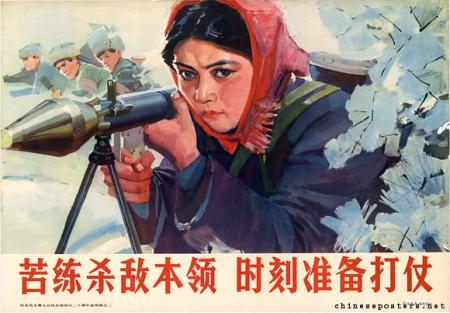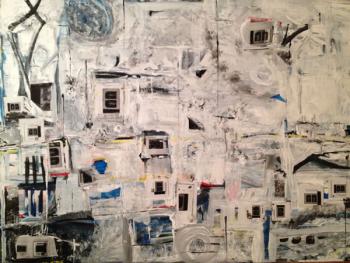Serendip is an independent site partnering with faculty at multiple colleges and universities around the world. Happy exploring!
culture

code switching between Bronx slang, kid Spanish, academic English and more.
I I like to write my posts in a cute little teal journal, accurately labled "thoughts." I wondered what the destiny of this book would be and I'm happy it's this. My entry started with three stick figure photos; the first was me being talked at by a teacher. The second was me talking to an adult and the third was me talking with a peer. The story then described an interaction I had with an older person in youth group. He asked me why I talked like a white person. At the time, that really bothered me, because it made me feel uncool and out of place. So then I would try to use more slang, but it didn't really help my "cool" cause becuase I sounded very off. This led me to think about the different languages I have to negotiate on any given day when I was little. With my mother I would have to speak Spanish, but my Spanish was never really eloquent, and then with friends I would have to use slang becuase my academic English freaked them out, and then with teachers I would have to use academic English. With language, I never really felt proficient with any of the three, but I'm starting to accept that all three of these are very much a part of the person I am today.

'Color Of Christ': A Story Of Race And Religion In America
Our discussion today reminded me of a story I listened to on NPR last week about the multiple perceptions of Jesus. It is really very interesting. This is the link:
http://www.npr.org/2012/11/19/165473220/color-of-christ-a-story-of-race-and-religion-in-america

Half the Sky
Hey everybody, I don't really know if this has any place in this Ecological Imaginings class, but maybe if we can imagine the preservation of women to be a form of ecology, not unlike the preservation of all plant life, animal life.
I just wanted to call everyone's attention to this excellent documentary currently being shown on PBS on Mon & Tues nights at 9:00 PM. I imagine you guys have lots of time to watch films, yeah! But this is an amazing series.
"Half the Sky" about gender based violence.
Here's the link to the first & second segment:
http://video.pbs.org/video/2283557115
http://video.pbs.org/video/2283558278

labyrinthine thoughts
Where I am sitting now: in a Starbucks on Broadway near 110th St, on the Upper West Side of New York, nearly 10 o'clock on Saturday night, the only place and time I've managed to get internet access and a modicum of space and time to myself. Better do this posting now; tomorrow will be full with rehearsal, and I need to practice my parts before that. This is actually OK with me as a way to live (so far...) The pleasure in the work to be done, and the stimulation and challenge of what I'm learning, more than outweigh the physical fatigue. So I sit and try to travel mentally back to the Labyrinth, and to my time there on Thursday, only a couple of days ago. My path from there to here is like a labyrinth in itself, twisting and turning through different locations and activities, meeting new people, trying to keep track of the threads of different conversations, different communication processes. I'm grateful for the opportunity to think myself back to the peaceful moments at the (Bryn Mawr) Labyrinth, just as I was grateful to have an assigned hour of contemplation. It makes me think, now, that integral to our ecological disaster in the present-day world, is the sheer pace of our life, the speed of it, the quantity of activity and experience we expect to pack into every day. How on earth can we expect to be aware of what is going on around us, of the existence and concerns of non-human beings, of the effect we are having on them and they on us, when we have assigned ourselves a more than full schedule we can barely keep up with?
The Teaching & Learning Initiative: Nepali Style
Hello beautiful Serendip world!
My name is Briana Bellamy, I'm a BMC alum '11. Recently, I returned from an incredible year of living in Nepal, working on a project funded by the Davis Projects for Peace grant. The project was called Sharing Knowledge for Peace, and its basic structure and philosophy grew from something that may be very familiar to some of you: the Teaching and Learning Initiative (TLI). As a sophomore at Bryn Mawr, I became involved with the staff-student branch of the TLI as a student mentor with a wonderful man from transportation services. It completely transformed my experience at Bryn Mawr, and became a huge part of both my sense of community and personal development. The relationships I built through the reciprocal model of the TLI and the deep learning I experienced both in these relationships and in the reflection meeting had a deep impact on me. I went on to become a coordinator for the program, and even wrote my thesis about it, exploring the inner workings of friendship, community, and shared spaces. I knew there was something powerful about the dynamics at play, and I was curious as to how the model of intentional reciprocal teaching and learning relationships could be valuable in other settings.
Learning and Narrating Childhoods Retrospective: Learning from Our 360 Final Projects (Prezi format)
INTRODUCTION: What does it mean to visit an African country with a class from a US college in order to learn?
Alice Lesnick, Term Professor of Education, Bryn Mawr College
July, 2012
360: Learning and Narrating Childhoods (Spring, 2012) was a cluster of three courses, one in Education, one in Literature, and one in Psychology. 15 Students from a broad range of majors, years, and backgrounds undertook a cross-disciplinary, cross-cultural study of child development, with a particular focus on the role of language and literacy in forming and channeling personal and group identities.

Mulan in Real Life: Chinese Women Soldiers and Feminism
The military has been traditionally defined as a masculine institution; actually it may be the most prototypically masculine one of all social institutions. Therefore, whenever women soldiers appear in public, they seem to be standout since people tend to think that for women to participate, either the military has to be perceived as transform to make it more compatible with how women are, or women have to be perceived as changing in ways that make them more suited for military service. Many changes have occurred in the past several decades. This period has witnessed a mushrooming of attention to women’s contribution to the army. More and more women soldiers are allowed to actually fight on the frontline or engage in violent and dangerous tasks. It seems that society started to recognize female’s ability as protectors of their countries, giving them space to choose whatever they want, including stepping on battlefields. Many people perceive this phenomenon as a huge progress of feminism, while others cast doubts on it. Interested in this issue, I would like to focus on female soldiers, especially Chinese women soldiers, in my webevent.


MTV's Missing Piece
To Begin. . .
As an avid TV junkie, I have stayed up many a night to watch re-runs of the shows “Teen Mom” and “16 & Pregnant.” I know you are probably rolling your eyes if you're not a fan of the “reality” TV phenomenon, but these shows have affected me in a way that other “reality” based shows never could. (...So understandable when thinking about their consistent lack of depth: there are not a multitude of thought-provoking conversations that follow the documentation of rainbow Jello shots and women pulling out other’s hair extensions). These shows have affected me partly because I am the product of unplanned pregnancy to a fifteen-year-old girl myself, and a subsequent adoption. I find the show to be a way to help me begin to understand what I meant to my birth mother at age fifteen, the prime time for being a devoted Frito Lay consumer and wearing exactly what the mannequin wears.


just speak nearby our minds::final project
[just speak nearby the borders of our minds] <-- link
This is a piece about borders. About communities. About movement and restrictions and ideologies. I wanted to interrogate how feminism is at times bounded by qualifiers, that is, to differentiate between French feminism and Third-World Feminism, and the ways in which those are both appropriate and constructed such that the result is constructed identities viewed as essential.
Among artists in the 20th and 21st century, explicit reference to prior works has become a mode of producing pieces. This may be in the form of collage or pastiche of some kind, and in video art, it is typically through found footage that these references can be made. Video Artists like Dara Birnbaum have spoken on the power of reappropriating footage, specifically, in her case, from popular media sources, but some of the logic remains in what I have done. Birnbaum wanted the agency to engage with the images being presented to her, to take ownership and subvert their meanings to create new meaning, asserting that she wanted to “talk back” to the media. Further, she asserts:

 Schooling often rests uneasily on presumed dichotomies between coverage and inquiry, skill development and creativity. By drawing on the often under-recognized parallels between biological evolution and human learning, this essay argues that formal education need and ought not forego the unconscious exploratory processes of informal learning. Rather than posit as natural the cultural story that formal schooling must prepare students to integrate with given cultures and foreknowable futures, the evolutionary perspective shows that education is better thought of as preparing students to create cultures and to change, and foster change, in relation to unknown futures. The properties that distinguish formal from informal learning -- conscious reflection and a degree of collective consensus about what constitutes knowledge at any given time – are, we argue, useful not as ends in themselves, but as tools for maximizing, sharing, and extending unconscious, evolutionary learning. Working with them as such offers a way out of some of education’s persistent problems. Two autobiographical case studies provide grounded examples of these evolutionary changes and indicate pathways of inquiry by which to pursue them.
Schooling often rests uneasily on presumed dichotomies between coverage and inquiry, skill development and creativity. By drawing on the often under-recognized parallels between biological evolution and human learning, this essay argues that formal education need and ought not forego the unconscious exploratory processes of informal learning. Rather than posit as natural the cultural story that formal schooling must prepare students to integrate with given cultures and foreknowable futures, the evolutionary perspective shows that education is better thought of as preparing students to create cultures and to change, and foster change, in relation to unknown futures. The properties that distinguish formal from informal learning -- conscious reflection and a degree of collective consensus about what constitutes knowledge at any given time – are, we argue, useful not as ends in themselves, but as tools for maximizing, sharing, and extending unconscious, evolutionary learning. Working with them as such offers a way out of some of education’s persistent problems. Two autobiographical case studies provide grounded examples of these evolutionary changes and indicate pathways of inquiry by which to pursue them.
